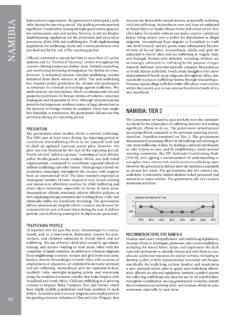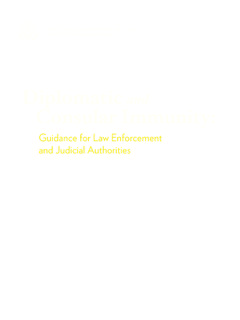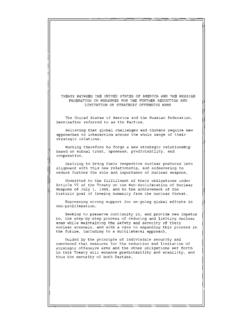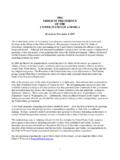Transcription of WEAPONS OF MASS DISTRACTION - United States …
1 WEAPONS OF. MASS DISTRACTION : Foreign State-Sponsored Disinformation in the Digital Age M A R C H 2 0 1 9. PARK ADVISORS | WEAPONS of Mass DISTRACTION : Foreign State-Sponsored Disinformation in the Digital Age Authored by Christina Nemr and William Gangware Acknowledgements The authors are grateful to the following subject matter experts who provided input on early drafts of select excerpts: Dr. Drew Conway, Dr. Arie Kruglanski, Sean Murphy, Dr. Alina Polyakova, and Katerina Sedova. The authors also appreciate the contributions to this paper by Andrew Rothgaber and Brendan O'Donoghue of Park Advisors, as well as the editorial assistance provided by Rhonda Shore and Ryan Jacobs. This report was produced with support from the US Department of State's Global Engagement Center.
2 Any views expressed in this report are those of the authors and do not necessarily reflect the views of the US State Department, Park Advisors, or its subject matter expert consultants. Any errors contained in this report are the authors' alone. PARK ADVISORS | WEAPONS of Mass DISTRACTION : Foreign State-Sponsored Disinformation in the Digital Age 0. Table of Contents 01 Introduction and contextual analysis 04 How do we define disinformation? 06 What psychological factors drive vulnerabilities to disinformation and propaganda? 14 A look at foreign state-sponsored disinformation and propaganda 26 Platform-specific challenges and efforts to counter disinformation 39 Knowledge gaps and future technology challenges PARK ADVISORS | WEAPONS of Mass DISTRACTION : Foreign State-Sponsored Disinformation in the Digital Age 1.
3 1. Introduction and contextual analysis On July 12, 2014, viewers of Russia's main state-run television station, channel One, were shown a horrific story. Five months prior, the Russian military had pushed its way into neighboring Ukraine, and channel One had been covering the political and military action on the ground. The July 12 story, however, was particularly dramatic. That day, channel One reporters interviewed a woman at a refugee camp near the Russian border, who claimed to witness a squad of Ukrainian soldiers nail a three-year-old boy to a post in her town square. The soldiers had tortured the boy to death over a period of hours, before tying his mother to the back of a tank and dragging her through the square.
4 1. channel One never questioned the woman's story. But at least one independent Russian journalist found the tale so unbelievable that he visited the alleged site to investigate. Finding no evidence that this atrocity had ever occurred, he interviewed one resident in the town square, the supposed site of the crime. This, the resident said, is the first I'm hearing of it.. So where did the story come from? Within a few days, the journalist and others traced the story back to a political scientist with ties to the Kremlin. Days before the shocking channel One report, this man had posted a similar tale on Facebook, with nearly identical details. By the time the Kremlin connection was uncovered, however, the damage was done: not only had the channel One report run on television, but the viral story was now reaching a much broader audience on social media.
5 The false crucifixion story was but one example of Kremlin-backed disinformation deployed during Russia's annexation of Crimea. In subsequent years, similar tactics would again be unleashed by the Kremlin on other foreign adversaries, including the United States during the lead-up to the 2016. presidential election. 1. See State-Run News Station Accused of Making Up Child Crucifixion, The Moscow Times, 14 July 2014, state-run-news-station-accused-of-making -up-child-crucifixion-37289; and Arkady Ostrovsky, Putin's Ukraine Unreality Show, . Wall Street Journal, 28 July 2014, ; and Andrew Higgins, Fake News, Fake Ukrainians, How a Group of Russians Tilted a Dutch Vote, New York Times, 16 Feb 2017, PARK ADVISORS | WEAPONS of Mass DISTRACTION : Foreign State-Sponsored Disinformation in the Digital Age 2.
6 Yet the use of modern-day disinformation does not start and end with Russia. A growing number of States , in the pursuit of geopolitical ends, are leveraging digital tools and social media networks to spread narratives, distortions, and falsehoods to shape public perceptions and undermine trust in the truth. If there is one word that has come to define the technology giants and their impact on the world, it is disruption. The major technology and social media companies have disrupted industries ranging from media to advertising to retail. However, it is not just the traditional sectors that these technologies have upended. They have also disrupted another, more insidious trade disinformation and propaganda. The proliferation of social media platforms has democratized the dissemination and consumption of information, thereby eroding traditional media hierarchies and undercutting A growing number of claims of authority.
7 The environment, therefore, is ripe for exploitation by bad actors. Today, States and individuals can easily spread disinformation at lightning speed and with States , in the pursuit of potentially serious impact. geopolitical ends, are leveraging digital tools There are significant vulnerabilities in the information ecosystem that foreign state-sponsored actors can exploit, and they revolve around three primary, interconnected elements: and social media networks to spread narratives, 1. The medium the platforms on which disinformation flourishes;. 2. The message what is being conveyed through disinformation; and distortions, and falsehoods 3. The audience the consumers of such content. to shape public perceptions The first two elements, the medium and the message, operate hand in hand.
8 Social media and and undermine trust in news platforms are designed to deliver information to mass audiences quickly, optimizing for the truth. viral content that generates clicks and thus revenue. As a consequence, they are inherently vulnerable to sensationalist disinformation that seeks to catch the eye and be The messages conveyed through disinformation range from biased half-truths to conspiracy theories to outright lies. The intent is to manipulate popular opinion to sway policy or inhibit action by creating division and blurring the truth among the target population. Unfortunately, the most useful emotions to create such conditions uncertainty, fear, and anger . are the very characteristics that increase the likelihood a message will go viral.
9 Even when disinformation first appears on fringe sites outside of the mainstream media, mass coordinated action that takes advantage of platform business models reliant upon clicks and views helps ensure greater audience Bot networks consisting of fake profiles amplify the message and create the illusion of high activity and popularity across multiple platforms at once, gaming recommendation and rating algorithms. 2. Information Society Project at Yale Law School and the Floyd Abrams Institute for Freedom of Expression, Fighting Fake News (Workshop Report), 2017, 3. Connecting the bots: Researchers uncover invisible influence on social media, University of Georgia, 30 May 2017, PARK ADVISORS | WEAPONS of Mass DISTRACTION : Foreign State-Sponsored Disinformation in the Digital Age 3.
10 Research shows that these techniques for spreading fake news are effective. On average, a false story reaches 1,500 people six times more quickly than a factual This is true of On average, a false story false stories about any topic, but stories about politics are the most likely to go reaches 1,500 people six For all that has changed about disinformation and the ability to disseminate it, arguably the times more quickly than a most important element has remained the same: the audience. No number of social media bots factual story. This is true would be effective in spreading disinformation if the messages did not exploit fundamental human biases and behavior. People are not rational consumers of information. They seek swift, of false stories about any reassuring answers and messages that give them a sense of identity and The truth topic, but stories about can be compromised when people believe and share information that adheres to their worldview.


















